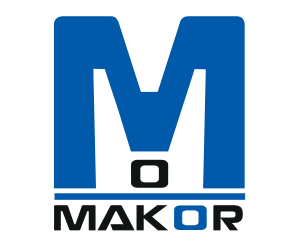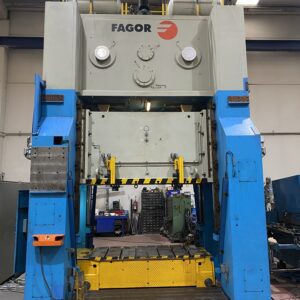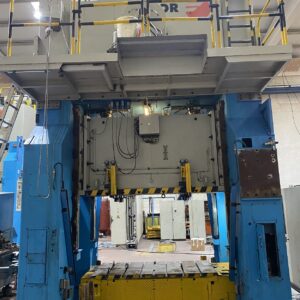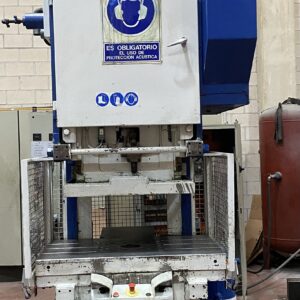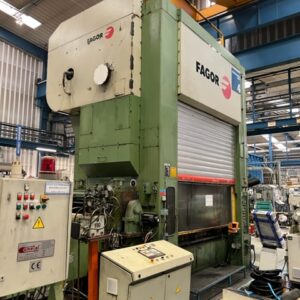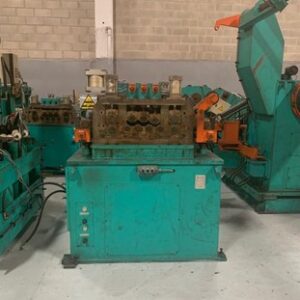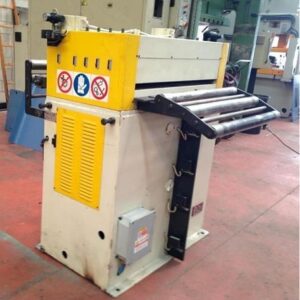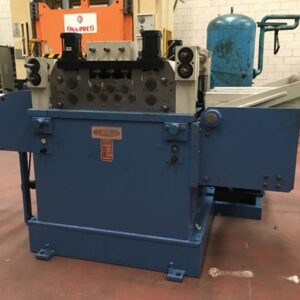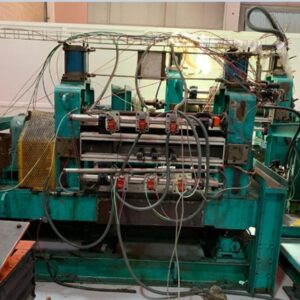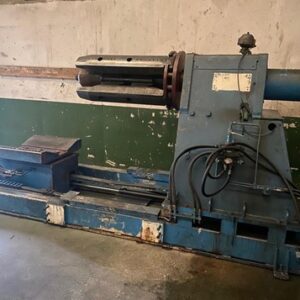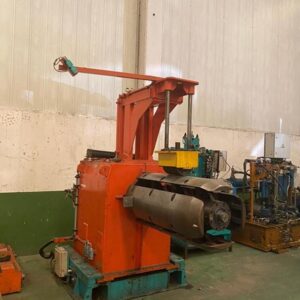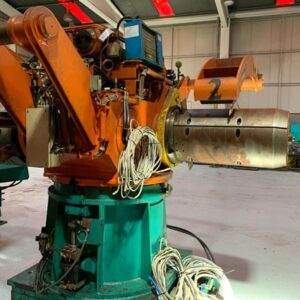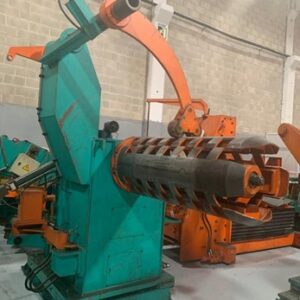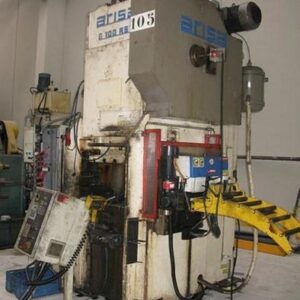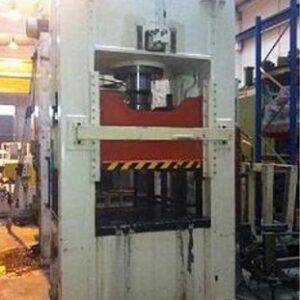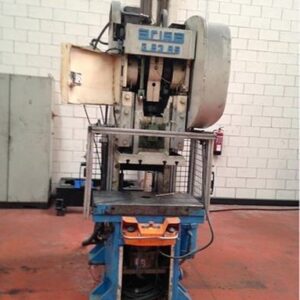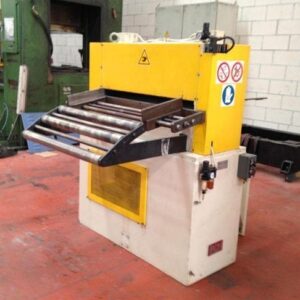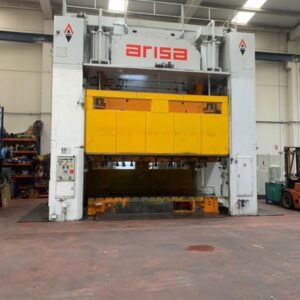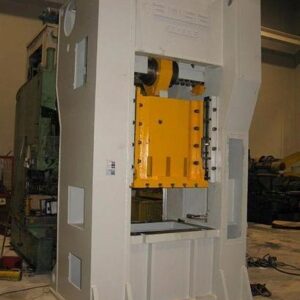WE HAVE A LARGE STOCK OF USED AND SECOND-HAND HYDRAULIC AND MECHANICAL PRESSES
Used and second-hand hydraulic and mechanical presses
At Makorpress we can offer you used and second-hand hydraulic and mechanical presses at the best price and with the best guarantee.
We restore and modernize new and second-hand European machinery to be reused with the maximum guarantees.
And how do we manage to offer you the best used and second-hand hydraulic and mechanical presses?
Thanks to retrofitting
WHAT IS RETROFITTING?

Retrofitting is a general term that can be applied to any physical structure or object, such as buildings, bridges, mobile phones, elevators, photocopiers, and in our case, industrial machines. In short, it means a new technology or added functions in the machine.
The retrofit of machines or industrial production systems involves the replacement of existing parts or adding new ones to improve the characteristics of the machine, such as efficiency, the safety of the same or workers.
When we talk about machinery, these activities are mainly carried out for:
- Improve the safety of all plant employees.
- Improve the quality of life of machine operators.
- Detect defects in real time during operation.
- Optimize the speed and quality of production.
- Computerize the system to ensure proper data collection, analysis, and reporting.
- Automate processes to improve the quality of the finished product.
- Reduce labor, maintenance and spare parts costs.
With retrofitting it is possible to adapt this machinery to the new regulations in force, providing them with a new amortization period and without the need to assume the cost of acquiring new equipment.
Types of used and second-hand hydraulic and mechanical presses
At a basic level, presses can be divided into two different categories: mechanical presses or hydraulic presses.
These classes are not determined by their power, but by the speed of their action.
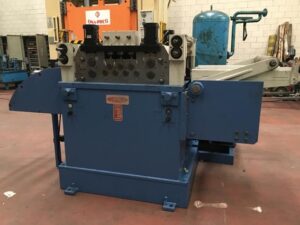
Check our wide stock of used and second hand hydraulic and mechanical presses. contact us 619 06 29 93
Hydraulic press for metal
Hydraulic presses
Hydraulic presses have a much lower downforce than electromechanical presses and therefore can generate higher forces.
Hydraulic presses are the most common type of press for one-shot production, but both types are used interchangeably in mass production.
Hydraulic presses are also used for very thick and heavy materials, as well as in the recycling sector: the popular car shredder is a press that is usually driven by hydraulic pressure. Pneumatic presses work in a similar way to hydraulic presses, but use compressed air instead of liquid for power.
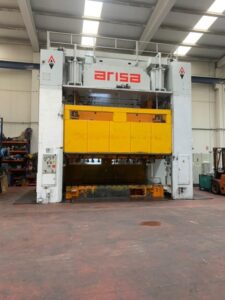
Hydraulic Press Type:
Deburring presses
Deburring presses are used in mold foundries and forgings to prepare molds for finishing on a CNC mill. Some presses can also perform different applications apart from trimming, including blanking, punching, stamping and forming processes, but are trivially referred to as a «deburring press» or «trimming press».
Check our wide stock of used and second hand hydraulic and mechanical presses Contact us 619 06 29 93
Mechanical presses
The most used presses in the production of large quantities are the mechanical and electromechanical presses, which provide sufficient compressive strength for almost any type of application. The electromechanical press can switch between single stroke mode and sequential stroke mode for added versatility. This slows down a bit, but the compression pressure is doubled, allowing the operator to handle a variety of very complex parts.
Power presses are designed as single frame or double frame presses. The single frame version, also known as a C-type vise, can be loaded with tools and materials very easily, but does not provide the same durability and accuracy.
Eccentric press
This type of industrial press is powered by an eccentric shaft and can achieve exceptionally short cycle speeds and high levels of productivity.
Toggle lever presses
These types of machines are operated by a rocking (or tilting) lever actuated mechanical system and were the type of machine favored by metalworkers before eccentric presses were introduced to the market.
Screw presses
This type of press, despite being slower, has a mechanical system based on spindles inside that is capable of producing very powerful pressure forces. Compared to other mechanical presses, screw presses generate the highest force.
Manual spindle presses are also a common choice due to their very simple manual controls. In fact, it only takes a little work for high enough pressure forces to be generated. With this type of presses it is also possible to carry out drawing or stamping work.

Check our wide stock of used and second hand hydraulic and mechanical presses Contact us 619 06 29 93
Special presses
Mandrel presses
Mandrel presses are small machines used to set and tighten rivets and screws. On many occasions they are manual or hydraulic-manual and are used to assemble and disassemble riveted or screwed constructions.
Straightening presses
Almost all straightening presses are manual hydraulic machines without tools. This type of metal vises is used to accurately align welded constructions and is typically found in repair shops and steel welding shops. In addition, these machines are also used to straighten small metallic materials for later inclusion in a larger overall product.
Deep drawing presses
Deep drawing presses are used on solid materials and metal blanks. It works at such high pressure that metals, especially aluminum, are liquid while fresh during the pressing process. The typical application of these industrial presses is in the production of aluminum tubes. To achieve the required throughput ratio in the serial drawing process, multiple die drawing presses are often used. Although each die has a very slow stroke, the combination of several processing plants results in production levels similar to those achieved with an electromechanical eccentric press.
Presses for touch-up and adjustment of molds and dies
Touch-up and mold setting presses are hydraulic presses equipped with a tool or «die». These types of presses can test pressing tools under ideal conditions and let the operator know if they are working properly.
Straighteners/winders
Pipe straighteners and profile straighteners are useful tools for bending long materials to the desired angle. However, the straightener and diffuser perform the same function but on the tape material. These machines are used to form thick sheets without twisting or bending and when edges are required press brakes are the perfect choice. Although these types of machines are included in the presses, the more appropriate term for straightening and rolling tools is «bending machines».
